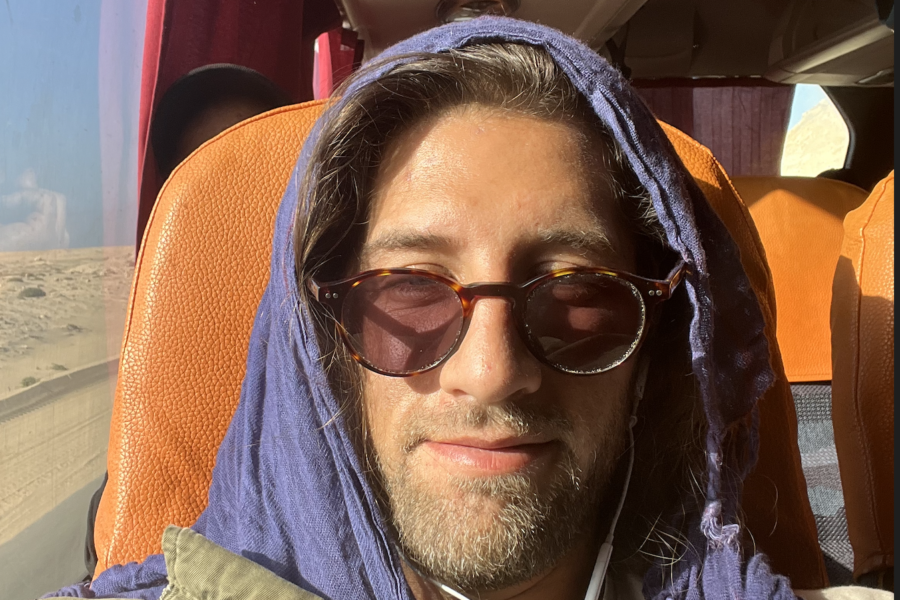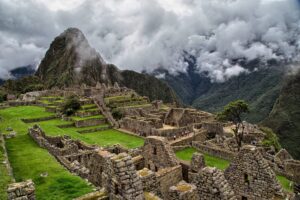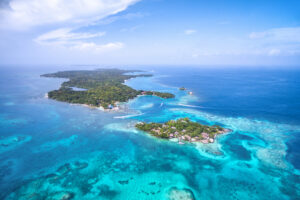Mission Accomplished! – A thrilling, mind-expanding expedition through the beautiful terrain of West Africa. Imagine crossing multiple countries solely by land, and through your travels, unearthing a profound connection to cultures steeped in rich history and stunning landscapes. This is the journey I embarked on, a voyage that allowed me to stretch the boundaries of my own endurance, resilience, and understanding of the world.
Now this is a journey, I believe few people take: a comprehensive backpacking tour through the West African terrain, crossing multiple countries solely by land.
Over six weeks, I traversed over 2000 miles, during which I set foot and spent nights in twelve different cities across three countries – Morocco, Mauritania, and Senegal. I navigated this vast landscape using an array of transportation methods, including bussing, train hopping, and shared vans. I lodged in a variety of settings, from budget-friendly hostels to the humble abode of a local Mauritanian, where I resided for about a week in the nation’s capital. Essentially, I was exploring the process of travelling from Morocco all the way down to Senegal, entirely on land.
This isn’t my first foray into intrepid explorations. I have previously hitchhiked across 1000 miles in Mozambique, and delved into the diverse cultures of five different countries over the span of approximately 100 days a few years ago in East Africa. These past journeys, still vivid in my mind, sparked my desire to explore the sands of West Africa.
The journey through West Africa proved to be an extraordinary one, made all the more challenging due to the rough terrain, the scarcity of travel infrastructure, and the language barrier, as I’m not a speaker of Arabic or French. Additionally, it’s one of the least traversed regions globally. This lack of frequently travelled routes and scarce information about land border crossings and travel tips created unique challenges. However, these hurdles did not deter me but instead fueled my desire for discovery.
With this in mind, I’d like to share my route, travel methods, and experiences to guide those who may be inspired to embark on a similar journey through West Africa. I’ll provide a comprehensive guide detailing my stops, accommodations, and expenditures. As always, feel free to reach out to me via the contact page on my website, or leave a comment on this post for any questions or inquiries.
So how did I embark on this adventure?
The journey began in Morocco, a nation that is relatively more travel-friendly compared to Mauritania and Senegal. The contrast is akin to night and day. Morocco boasts a plethora of major cities, each offering a wide variety of accommodation options.
Moreover, the country is equipped with a smooth-functioning railway system, facilitating easy intercity travel. As a case in point, consider some of the principal train routes in Morocco, which seamlessly connect the bustling cities.
In addition to the railway, Morocco also has two major bus systems: CTM and Supratours. These services are digitalized, meaning that tickets can be purchased via a smartphone or a computer. After booking, customers receive their tickets through email and text messages, which makes the entire process hassle-free. However, I recommend booking buses a few days in advance to secure a ticket for the desired travel date and time. The buses also present an economical travel option.
You can book your tickets on here: https://www.oncf-voyages.ma/
Furthermore, some of the finest tagine dishes I savored were at the bus stops where the bus halts mid-journey for a 30-minute break. Passengers can use this break to stretch their legs, grab a bite to eat, and use the washroom. Speaking of washrooms, it’s worth mentioning that Morocco is among the few countries I’ve visited where long-haul buses do not feature onboard toilets. Therefore, I advise travelers to moderate their water intake prior to boarding.
Now that you’re familiar with transportation in Morocco, let’s discuss the starting point for your journey down to Senegal, through the Western Sahara and Mauritania.
In Morocco, I had roughly three weeks to soak in as much of the country’s distinct charm as I could, carefully balancing between sightseeing and relaxation, ensuring I didn’t feel rushed at any location. I’m currently in the process of curating a detailed 21-day itinerary, which will highlight key activities, places of interest, and a practical budget guide. For the time being, however, allow me to provide you with a brief outline.
I flew into Casablanca. From there, I boarded a train to Fes and then a bus to the captivating blue city of Chefchaouen. Subsequently, I managed to secure a ride with a Spanish tourist who had driven her car to Morocco and was heading to Merzouga, a gateway to the expansive desert landscape. From Merzouga, I caught a bus to the vibrant city of Marrakesh, followed by another bus to the coastal town of Essaouira, and finally, one more to Agadir. Agadir serves as a springboard to Dakhla, the southernmost city in Morocco, from where you can catch a bus to the Mauritanian border.
I spent roughly three to four days at each location, barring Agadir and Dakhla, which primarily served as transit stops. By this stage of my Moroccan journey, I commenced my descent down West Africa, setting my sights on Senegal.
Upon landing in Agadir, I suggest allocating at least one night’s stay to recover from your journey and to prepare for the forthcoming marathon 21-hour bus ride to Dakhla. Indeed, you didn’t misread; it’s a formidable 21 hours aboard a bus. This trip marked the longest bus journey I’ve ever taken, with the limitless desert offering no opportunities for shortcuts, unless you happen to have a magic carpet handy!
I opted for an economical hotel found on booking.com, as hostels are not available in Agadir. My choice, Hotel Kamal City Center, proved to be a remarkable stay for only $24 per night. It provided amenities such as a shower, rooms with two beds, ample outlets for charging your devices, and a reliable wifi connection. For an additional fee, you can opt to include breakfast in your stay.
However, this may not be necessary as the hotel’s convenient location allows for easy access to local cafes within walking distance. Additionally, there’s a fantastic smoothie and juice stand located right in front of the hotel for a quick and refreshing start to your day.
The bus service you’ll want to opt for is Supratours, and the fare for this epic journey to Dakhla stands at $54. Make sure your ticket reads from Agadir to Dakhla. Beware, there are multiple Supratours stations in Agadir, but the main one is where you’ll embark on this journey. Be cautious of taxi drivers attempting to divert you to another station; it’s a common ploy to extract more money from unsuspecting travelers.

Supratours offers two departures daily, one at 10:15 AM and another at 7:00 PM. I took the latter. It’s advisable to arrive at the bus station 30-45 minutes ahead of departure. This allows ample time to collect your physical ticket and a corresponding ticket for your luggage, a standard practice for all bus rides. Your luggage is tagged and stowed in the bus’s hold. Upon reaching your destination, present the luggage ticket to ensure your belongings are returned to the rightful owner.
Then, you undertake the 21-hour journey through the boundless Western Sahara, finally reaching Dakhla. Now, let’s talk about Dakhla, an interesting destination itself, and the next phase of the journey.

During my stay in Dakhla, I lodged at the Ayouz House hotel. This accommodation was quite satisfactory, with its prime advantage being its close proximity to the Dakhla Supratours station – a mere ten-minute walk. This station serves as a convenient spot for purchasing bus tickets to the border at Guerguerat and for arranging onward travel to Nouadhibou (Mauritania’s second-largest city near the border) or directly to Nouakchott, Mauritania’s capital. As I had secured a couchsurfing arrangement in Nouakchott, I opted to travel directly there. The ticket for this journey cost me $46. Below, you’ll find the price listing for the bus services to the border, onward to Nouadhibou, and then to Nouakchott.
The bus departed Dakhla at 9 AM and reached the border around noon. I wouldn’t necessarily advise packing snacks for the journey, as there is a café conveniently located in front of the Supratours station where you can enjoy breakfast before departure. Also, upon reaching the border, you’ll find a restaurant offering delicious Moroccan cuisine, including the iconic tagine.
It’s worth noting that the border doesn’t open until midday, around 12:30 PM. This delay provides an excellent opportunity to savor your last meal in Morocco as you anticipate entry into Mauritania.
The border crossing process was surprisingly smooth and straightforward, ranking among the least crowded border crossings I’ve encountered. The entire procedure – including obtaining an exit stamp, walking across the border, taking a van ride, and acquiring a Mauritanian visa – took no more than an hour. It was smooth sailing with fellow travelers that included a French couple and an Irish chap I befriended, along with a smattering of locals – not more than twenty people in total.
Supratours made the journey exceedingly simple. Upon arrival at the border, I disembarked the bus and relished a leisurely lunch before walking across the border. I passed through the the gateway picture above to a booth where I received my Moroccan exit stamp. I then boarded a Supratours-arranged van that drove me to the Mauritanian border office for visa processing. This step was straightforward to the point of brevity; they took my picture, charged a visa fee of $60 USD (accepted in Moroccan dirham, USD, Euros, or Mauritanian ouguiya), and didn’t ask any questions.
Near the Mauritanian border office, you’ll find individuals willing to exchange your currency. You can also purchase a SIM card for around 500 Mauritanian ouguiya or $14 USD, which provides 1GB of data. This can be recharged once you reach either Nouadhibou or Nouakchott.
Once the visa formalities are complete, you’ll return to your van, which will transport you directly to either Nouadhibou or Nouakchott. And there you have it – one of the least dramatic border crossings I’ve ever experienced, marking the successful conclusion of the first part of this incredible West African journey.
Upon arrival in Mauritania, you have a couple of options: either transit down to the Senegal border (Rosso) with stopovers in Nouadhibou or Nouakchott, or take time to explore the country. Keep in mind that Mauritania’s tourist infrastructure is rather limited, so expect to navigate the country much as a local would.
I spent an enriching week in Mauritania, couchsurfing in Nouakchott with a gracious host, now a dear friend, named Ha Roune. This immersive experience provided me with a comfortable place to stay, the chance to explore the city, and the opportunity to savor traditional, homemade Mauritanian meals. The connection, camaraderie, and authentic human interaction I experienced during my stay were profoundly moving, inspiring me to create a comprehensive guide about my Mauritanian journey. If you’re planning a visit to Mauritania, I highly recommend reaching out to Ha Roune via his couchsurfing profile. He’s a wellspring of advice, tips, and recommendations that can greatly enhance your travel experience.
In addition to my time in Nouakchott, I undertook the notorious Iron Ore Train journey. You can find more information on this unique experience in my blog post, “An Epic Journey across the Sahara: How to Hitch a Ride on the Iron Ore Train in Mauritania”.
As your time in Mauritania winds down and you prepare to venture into the final phase of your journey to Senegal, what’s next? Well, from Nouakchott, it’s straightforward to catch a bus, van, shared car, or hitch a ride to the Rosso border. The fare shouldn’t exceed 300 Mauritanian ouguiya or $9 USD. The border process is fairly straightforward, though it can be quite intense.
Upon arrival at the border, you may find yourself beset by individuals offering to carry your bags for a fee. However, since the exit stamp office is merely a two-minute walk away, there’s no real need for their services. Also, note that they required me to present a scanned page of my Mauritanian visa page from my passport to secure my exit stamp. So, it’s a good idea to keep a copy handy for this purpose.
The Rosso border crossing between Mauritania and Senegal is unique in that it’s not simply a land crossing, but rather a river crossing. Here, the Senegal River forms a natural border between the two countries.
You can choose between two methods to cross the river: pay for a boat ride, or take the ferry. I chose the latter option, which is free of charge. After crossing the river, a police officer on the Senegalese side will take your passport. From there, you walk to the office where Senegal visas are issued, which is situated on the left side of the crossing point. Wait there, and the officer will bring your passport to the office for visa processing.
Once your visa is approved and your passport stamped, you’re ready to move forward. The entire process took me about an hour and was slightly confusing at times. However, fortune smiled upon me when I met a local Senegalese on the Mauritanian side of the border who was returning to Senegal. He kindly assisted me in navigating the process, emphasizing the value of patience, adaptability, and forging connections while traveling.
With your Senegalese visa and stamp in hand, arranging transportation to your desired destination within the country is straightforward. I chose to take a shared car to the capital, Dakar, costing 7500 Senegalese CFA, with an additional fee of 500 for my luggage, for a total of around $13 USD.
It’s crucial to note that traveling via this shared car method might require some waiting time at the border. I initially ventured to a town near the border to find an ATM and attempted to take a shared car directly from there to Dakar. However, this meant waiting for enough passengers to fill the car, which took about 4 hours. In retrospect, I believe it would have been easier to secure transport to Dakar directly at the border. So, ensure you bring enough cash to comfortably cover your ride costs.
Traveling this way requires patience and adaptability, but it is also an opportunity to immerse yourself fully in the local travel culture.
Once I arrived in Dakar, I opted to stay at the Ngor Surf Camp on Ile de Ngor. For just $42 a night, we are given dormitory-style accommodation complete with two daily meals, prepared family-style for the entire camp. I chose this locale for several reasons. Primarily, I wished to meet fellow travelers and experience a laid-back week on an island, which means going barefoot, shirtless, and savoring the tastes of juicy mangoes and freshly caught fish. Such a setting was much needed, especially after a this journey, haha!

And there you have it, mission accomplished! A remarkable overland journey from Morocco to Senegal!
My West African journey has left an indelible mark on my heart, leaving me with countless memories, invaluable experiences, and a sense of understanding that could only be fostered by traversing such diverse landscapes and cultures. From navigating the vast terrain to conversing with locals, every challenge encountered was a stepping stone towards greater learning and growth. Every connection made, every sight seen, and every hurdle conquered added to the richness of this journey.
As I look back, I see not just a voyage through lands unknown, but a way to open your eyes to the more remote parts of this world. In the beautiful mosaic of cultures and the untamed beauty of the landscapes, I found a deeper appreciation for the world and my place within it. I urge you, to take this story not just as an adventure told but as a call to venture into the unknown, to explore, to connect, and to discover the incredible world we inhabit. Consider this an open invitation to venture beyond the familiar and the comfortable. It’s time for you to write your own chapter in the great story of exploration and discovery. Embark on this journey, and who knows – you might find a piece of yourself you never knew existed.
Overview:

Route Outline (Major Stops):
- Agadir, Morocco
- Dakhla, Morocco
- Nouakchott, Mauritania
- Dakar, Senegal
Accommodation:
- Hotel Kamal City Center, Agadir, Morocco
- Ayouz House hotel, Dakhla, Morocco
- Couchsurfing arrangement with Ha Roune, Nouakchott, Mauritania
- Ngor Surf Camp, Dakar, Senegal
Border Crossings:
- Morocco to Mauritania at Guerguerat
- Mauritania to Senegal at Rosso
Total Cost Overview:
Accommodation Costs
| Location | Accommodation | Cost |
|---|---|---|
| Agadir | Hotel Kamal City Center | $24 |
| Dakhla | Ayouz House hotel | $22 |
| Nouakchott | Couchsurfing | Free |
| Dakar | Ngor Surf Camp | $42 |
Transportation Costs:
| Route | Transportation | Cost |
|---|---|---|
| Agadir to Dakhla | Bus | $54 |
| Dakhla to Nouakchott | Bus | $46 |
| Nouakchott to Rosso Border | Bus | $9 |
| Rosso Border to Dakar | Shared Car | $13 |
Visa Costs for USA citizen:
| Location | Visa | Cost |
|---|---|---|
| Mauritania | Mauritanian Visa | $60 |
| Senegal | Senegal Visa | Free |

























